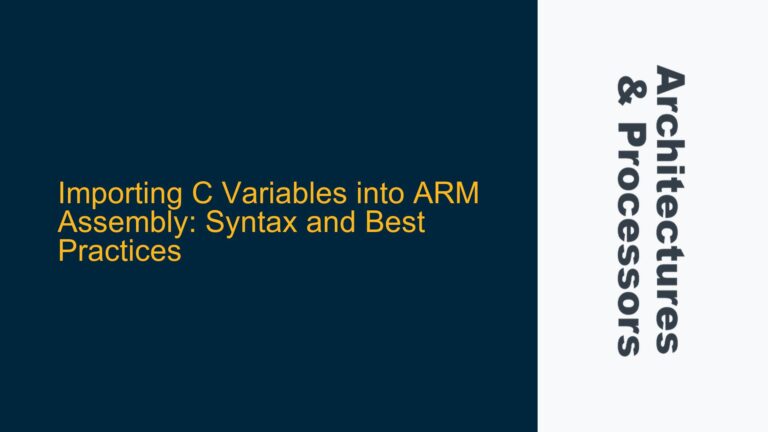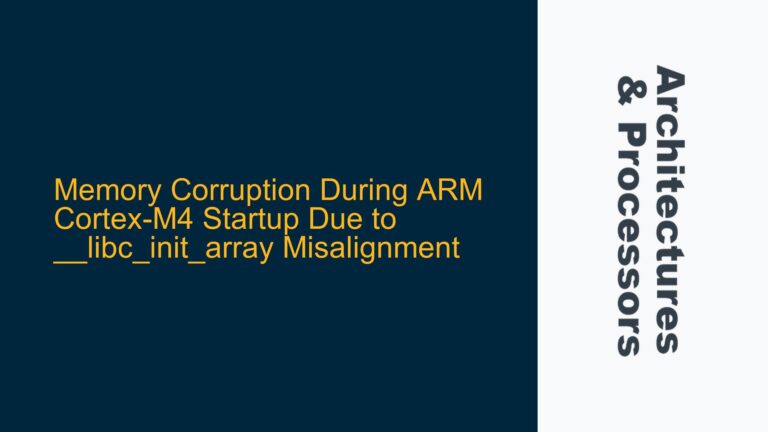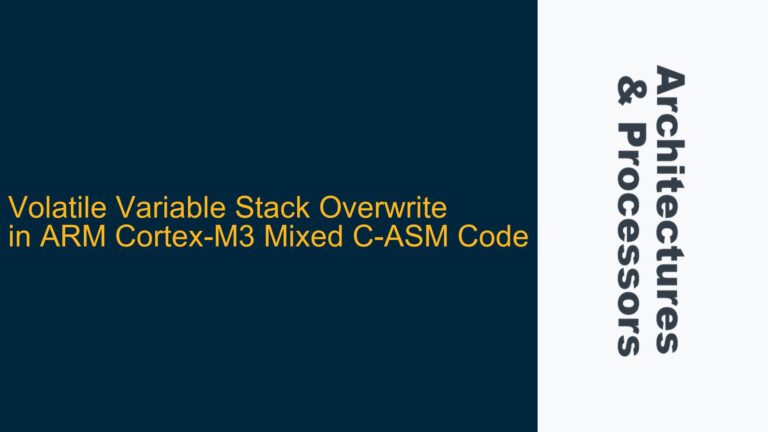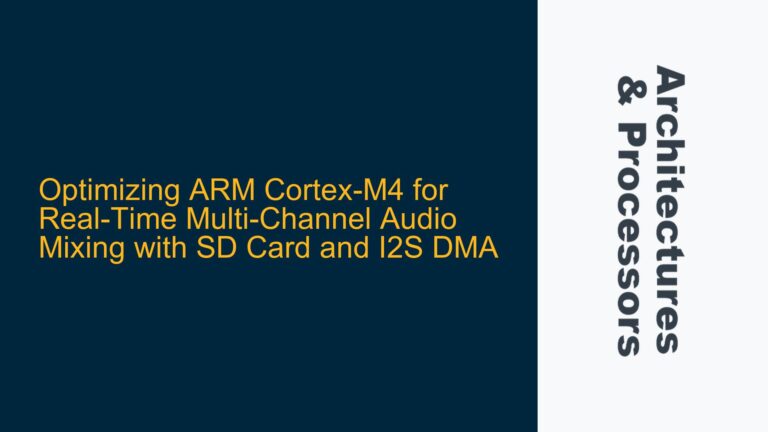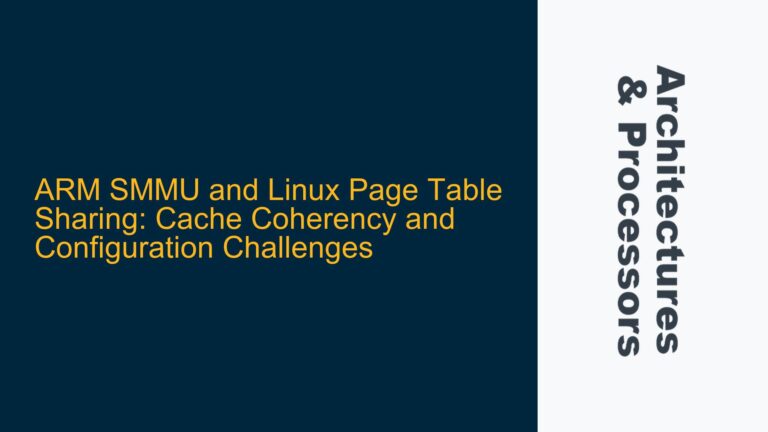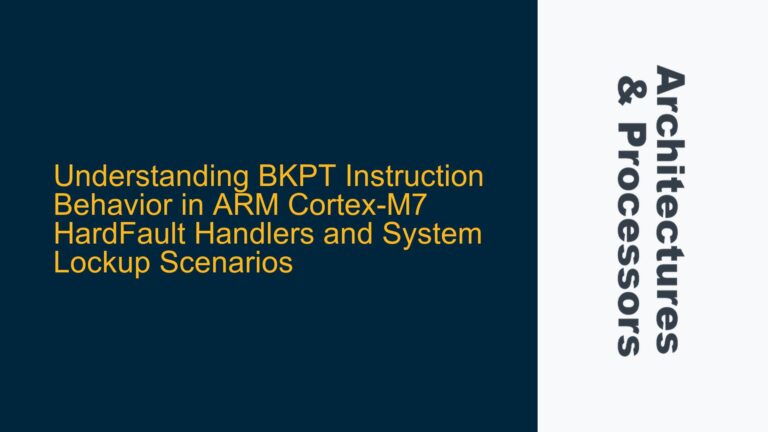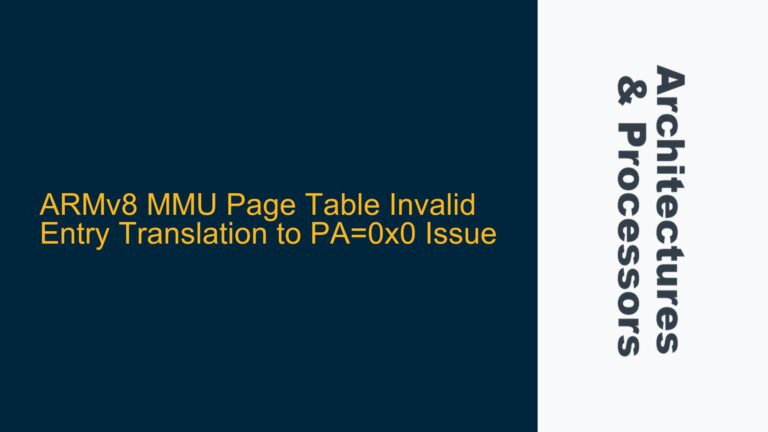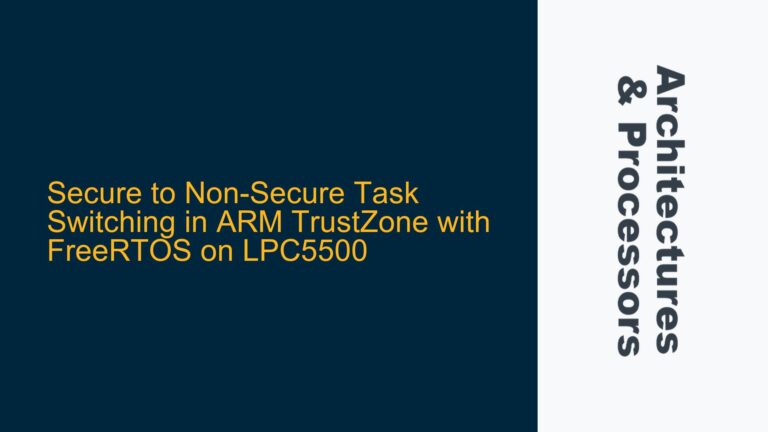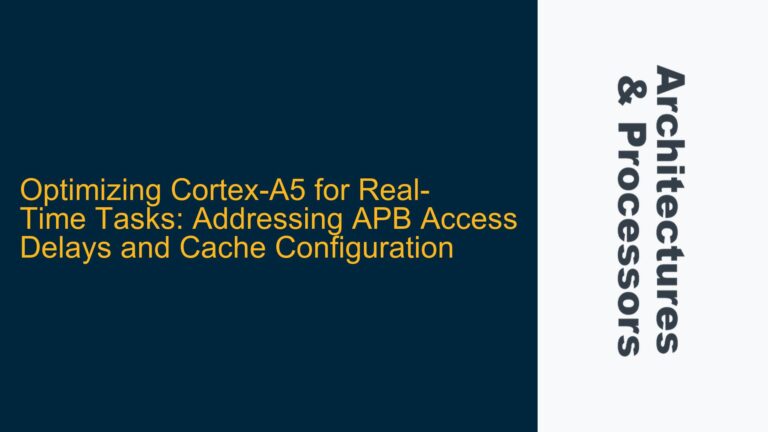Non-Secure EXC_RETURN Value Ambiguity in Secure HardFault Handler
Non-Secure HardFault Handler Trapping and EXC_RETURN Value Analysis When dealing with ARM Cortex-M processors that implement the ARMv8-M architecture, one of the critical aspects of debugging and fault handling is understanding the behavior of the EXC_RETURN value, especially in the context of secure and non-secure states. The EXC_RETURN value is a special code that the…

